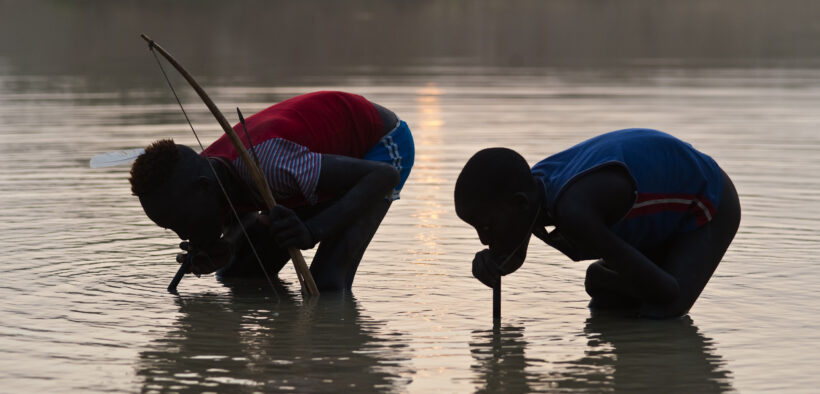
By Dr. Kashef Ijaz, vice president, health programs.
Completely wiping out a disease is nearly impossible. In all of history, only one human disease has been eradicated — smallpox, in 1980 after a herculean global vaccination campaign that took decades to complete. Polio persists (albeit in small numbers) despite the availability of a highly effective vaccine since the 1950s. Ditto measles.
Yet today we can realistically envision the eradication of Guinea worm disease within our lifetimes. From an estimated 3.5 million cases a year when The Carter Center took leadership of the eradication effort in 1986, to just six cases reported so far in 2021, the goal is in sight.
But lest we celebrate prematurely, we are reminded that the final stage of any such campaign is the most difficult. Cases are easy to find and treat when they are all around you; now they are the proverbial needle in a haystack.
There is no vaccine or curative medicine for Guinea worm disease; it is being conquered almost entirely by modifying human behavior. Relying on hundreds of thousands of volunteers in tens of thousands of villages, The Carter Center and its partners have taught millions of people about the Guinea worm life cycle and how to interrupt it through careful filtration of drinking water and containment of cases. This work is augmented by the treatment of infected water sources with a chemical that kills worm larvae.

Young goatherders in Terekeka County, South Sudan, use personal pipe filters to keep from swallowing tiny water fleas that harbor Guinea worm larvae. As part of the overall Guinea worm eradication effort, The Carter Center has distributed millions of filters across 21 countries in Africa and Asia and trained people how to use them. (The Carter Center/Louise Gubb)
Imperative to the effort are (a) quickly identifying all potential infections and (b) ensuring that those who are infected do not wade into water sources and risk recontaminating them. The Center and partner countries offer cash incentives for reporting suspected infections, which are all investigated quickly and vigorously.
Unfortunately, humans are not the only reservoir for the disease. Dogs, cats, and baboons can harbor Guinea worm as well, and it’s just as important to contain animal infections as human cases. Because of this relatively recent development, dog and cat owners are encouraged to proactively tether their animals to keep them away from water sources. Keeping dogs away from water is no easy task, but people are doing it and the results are clear: Animal infections are down sharply as well in 2021.
Eradication requires stopping infections from occurring in both humans and animals. Rooting out the final few human cases and animal infections and securing all water sources won’t be done by tomorrow or the day after, but we are gradually closing in on the last Guinea worm. That will be a time for humanity to celebrate.
Until then, we work.
Related Resources
Learn more about our fight against Guinea worm »
Learn more about the Center’s Health Programs »
The Carter Center: Leader in the Eradication and Elimination of Neglected Tropical Diseases »
This article was originally published in the Saporta Report.
Please sign up below for important news about the work of The Carter Center and special event invitations.